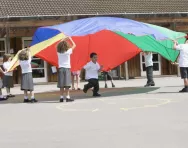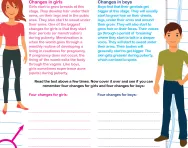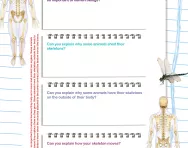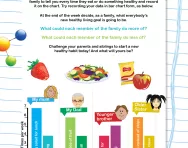Important update from TheSchoolRun
For the past 13 years, TheSchoolRun has been run by a small team of mums working from home, dedicated to providing quality educational resources to primary school parents. Unfortunately, rising supplier costs and falling revenue have made it impossible for us to continue operating, and we’ve had to make the difficult decision to close. The good news: We’ve arranged for another educational provider to take over many of our resources. These will be hosted on a new portal, where the content will be updated and expanded to support your child’s learning.
What this means for subscribers:
- Your subscription is still active, and for now, you can keep using the website as normal — just log in with your usual details to access all our articles and resources*.
- In a few months, all resources will move to the new portal. You’ll continue to have access there until your subscription ends. We’ll send you full details nearer the time.
- As a thank you for your support, we’ll also be sending you 16 primary school eBooks (worth £108.84) to download and keep.
A few changes to be aware of:
- The Learning Journey weekly email has ended, but your child’s plan will still be updated on your dashboard each Monday. Just log in to see the recommended worksheets.
- The 11+ weekly emails have now ended. We sent you all the remaining emails in the series at the end of March — please check your inbox (and spam folder) if you haven’t seen them. You can also follow the full programme here: 11+ Learning Journey.
If you have any questions, please contact us at [email protected]. Thank you for being part of our journey it’s been a privilege to support your family’s learning.
*If you need to reset your password, it will still work as usual. Please check your spam folder if the reset email doesn’t appear in your inbox.
Growing pains explained

What are growing pains?
Nobody really knows what growing pains are, but there are various theories about it. The theory I like is that as bones grow, things get stretched in the process. Some people think it’s due to loose or tight joints, but there isn’t a definite opinion as to which one is right.
Where do growing pains occur?
Growing pains occur on both legs rather than just one. They are around the joint rather than in it, and tend to be concentrated around the calves and lower leg region.


Boost your child's maths & English skills!
- Follow a weekly programme
- Maths & English resources
- Keeps your child's learning on track
What ages are growing pains at their worst?
Growing pains usually affect children between ages 5-13. Attacks can last a few minutes or hours, and they can recur at any time during this age range. They’ll stop when the child stops growing.
Do all children experience them?
They don’t, but those who do have growing pains when they’re small will get them again as they grow. And, equally, if a child didn’t have growing pains when they were very young, it’s likely that they won’t have problems with them when they’re older.
How are growing pains different from other pains?
Growing pains are related to a physiological process (so, a natural function of the body), and are bilateral rather than unilateral – they will involve both legs rather than just one or the other. Growing pains aren’t considered to be very serious, and there are some easy ways to help children manage the pain.
Why do they hurt so much?
This depends on the mechanism of the pain. Because nobody knows what growing pains are exactly, it is thought that the pain could come from overuse, muscles being strained, or perhaps tendons being stretched. Basically, there is pain because the tissues involved have pain fibres in them.
What can I do to help my child?
Massaging the areas that hurt will help, as will anti-inflammatories such as paracetamol and children’s painkillers. Some children with growing pains see physiotherapists for stretching exercises.
Should I see my GP about them?
It’s almost always worth discussing this with your GP, as it’s not safe to assume that all leg pain will just be growing pains. If there is something else going on, it’s best to find out straight away. GPs are very experienced with this, and children are rarely sent to hospital because of growing pains. Your GP can refer you to a physiotherapist if necessary.
Dr. David Shortland is from the Royal College of Paediatrics and Child Health.








